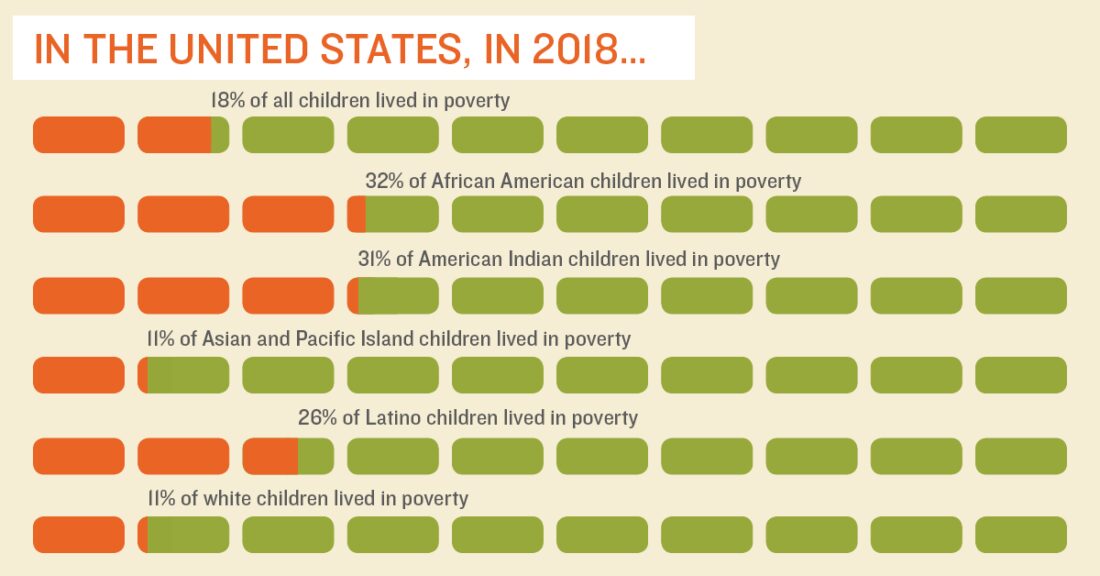Progress Stalls on Child Poverty, According to 2018 Data

In 2018, 13 million children in the United States — 18% of all kids — were living in poverty, and for the first time since 2014, the percentage did not decrease compared to the previous year. This is discouraging news; all children should have the economic security that provides them the opportunity to thrive. However, the share of children in poverty remains significantly lower than its recent peak of 23%, seen in 2011 and 2012 in the shadow of the Great Recession, and the rate has not been lower than 18% since 2001.
Racial and ethnic disparities remained sharp, reflecting the work that remains to be done to address persistent inequities. African American (32%) and American Indian (31%) children are nearly three times as likely — and Latino kids (26%) more than twice as likely — to live in poverty as white (11%) and Asian and Pacific Islander (11%) children.
Mississippi was home to the highest share of children in poverty among the states (28%, one percentage point greater than in 2017). Percentages rose in 13 states and fell in 22 and the District of Columbia compared with 2017, although the reduction exceeded one percentage point only in D.C. (26% to 23%), Louisiana (28% to 26%), Massachusetts (14% to 12%) and Vermont (also 14% to 12%). In Puerto Rico, 57 percent of children lived in poverty in 2018.
In 2018, living in poverty meant that a family of two adults and two children had an income of less than $25,465. Newly released data also examine child poverty by age and by race and ethnicity and age, and figures on children living under 200% of the federal poverty level can also be found on the Data Center. Half or more of all children are growing up low-income families in Arkansas, Louisiana, Mississippi and New Mexico, as well as in Puerto Rico.






